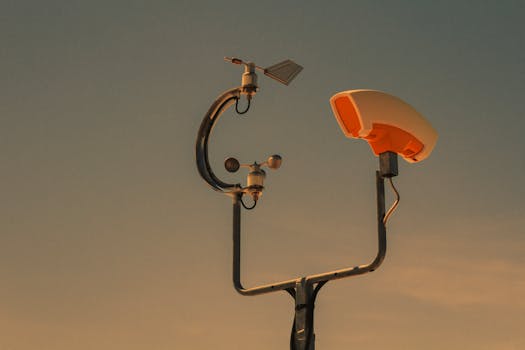
How Satellites Monitor Climate Change and Environmental Shifts
How Satellites Monitor Climate Change and Environmental Shifts is a vital topic in today’s world, as the impact of human activities on the environment becomes increasingly evident. Climate change and environmental shifts are complex and multifaceted issues that require continuous monitoring and assessment. Satellites have become an essential tool in this endeavor, providing a unique perspective on the Earth’s systems and processes. In this article, we will explore the role of satellites in monitoring climate change and environmental shifts, and how they contribute to our understanding of these critical issues.
Satellites have been used for decades to study the Earth’s climate and environment. The first Earth-observing satellite, TIROS-1, was launched in 1960, and since then, numerous satellites have been launched to monitor various aspects of the Earth’s systems, including weather patterns, ocean currents, and land use changes. Today, there are over 5,000 satellites in orbit around the Earth, many of which are dedicated to Earth observation and monitoring.
The Role of Satellites in Monitoring Climate Change
Satellites play a crucial role in monitoring climate change by providing data on key indicators such as sea level rise, ice sheet melting, and changes in ocean currents and temperature. Satellites like Jason-3 and Sentinel-6 measure sea level rise with high accuracy, while satellites like GRACE and GRACE-FO monitor changes in the Earth’s gravity field, which is essential for understanding ice sheet melting and ocean currents. Satellites like Terra and Aqua provide data on ocean temperature and color, which is used to study ocean currents and phytoplankton blooms.
Satellites also monitor changes in the Earth’s atmosphere, including the concentration of greenhouse gases such as carbon dioxide and methane. Satellites like OCO-2 and GOSAT measure the concentration of these gases with high accuracy, providing valuable data for climate models and policymakers. Additionally, satellites like CloudSat and CALIPSO study cloud formation and properties, which is essential for understanding the Earth’s energy balance and climate system.
The Role of Satellites in Monitoring Environmental Shifts
Satellites also play a critical role in monitoring environmental shifts, including deforestation, land degradation, and changes in water quality. Satellites like Landsat and Sentinel-2 provide high-resolution images of the Earth’s surface, which are used to study changes in land use and land cover. Satellites like MODIS and VIIRS monitor vegetation health and productivity, providing valuable data for understanding ecosystem dynamics and biodiversity.
Satellites like SMAP and SMOS monitor soil moisture and ocean salinity, which is essential for understanding the Earth’s water cycle and hydrological processes. Satellites like Suomi NPP and JPSS-1 provide data on atmospheric and oceanic conditions, including sea surface temperature, sea ice cover, and ocean currents. These data are used to study ocean-atmosphere interactions and predict weather patterns and climate variability.
Conclusion
In conclusion, satellites play a vital role in monitoring climate change and environmental shifts, providing valuable data and insights to scientists and policymakers. The data and information provided by satellites are essential for understanding the Earth’s systems and processes, and for developing effective strategies to mitigate and adapt to climate change and environmental shifts. As the impact of human activities on the environment continues to grow, the importance of satellite monitoring will only continue to increase, providing a critical tool for managing the Earth’s resources and ensuring a sustainable future.


